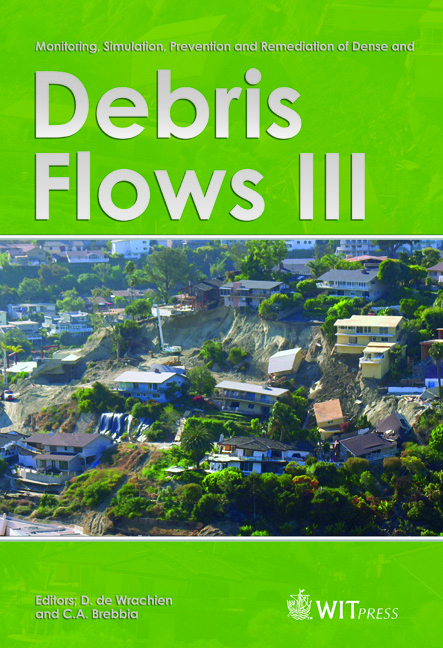Rheological Properties And Debris-flow Modeling In A Southern Italy Watershed
Price
Free (open access)
Transaction
Volume
67
Pages
12
Page Range
237 - 248
Published
2010
Size
2,480 kb
Paper DOI
10.2495/DEB100201
Copyright
WIT Press
Author(s)
T. Bisantino, P. Fischer, F. Gentile & G. Trisorio Liuzzi
Abstract
The Pulsano watershed, located in the southern side of Gargano (Puglia-Italy), is subject to debris-flow phenomena originating from the weathering of the limestone rocks that constitute the geological parent material. The territory is poorly monitored and between intense and rare events, which transport large particle size materials, more frequent hyper-concentrated flows, which transport heterogeneous sediments, occur. On this basis the debris-flow risk assessment appears very complex, since it depends on both the available debris volume and the hydraulic characteristics of the flow. This work proposes a methodology of analysis and modeling of debris-flows that is able to integrate the results of the experimental investigations on materials with models simulating the triggering, propagation and deposition of the flow. For this purpose the rheological response of natural suspensions collected from the superficial deposits was investigated using a rheometric tool for large particle suspensions: the Ball Measuring System (BMS). The triggering and propagation of the debris-flow were simulated using the SHALSTAB and FLO-2D models in order to reproduce the 15 July 1972 event. Afterwards the influence of rheology on debris-flow depositional features was investigated. Keywords: debris-flow, rheology, modeling. 1 Introduction In recent years some debris-flow events occurred in the South-Gargano watersheds (Puglia Region-Southern Italy). These phenomena originate from the weathering of the limestone rocks that constitute the geological parent material
Keywords
debris-flow, rheology, modeling





